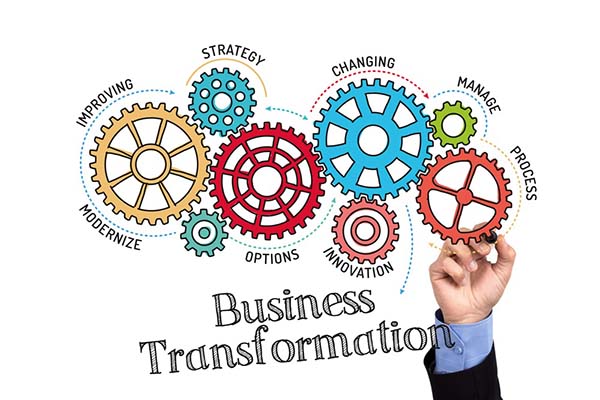A prominent US bank, renowned for its traditional marketing methods, historically relied on “Big Bang” campaigns to launch new products, including its credit card offerings. These campaigns were meticulously planned for months, with an intense focus on creating a synchronized, multi-channel launch. The bank used multiple mediums like social media, print, radio, and in-person events across various theaters and regions.
The primary goal of these campaigns was to reach as many potential customers as possible on launch day, creating a major splash in the market. However, the same approach that created a big splash also had its own significant drawbacks, especially when it came to operational flexibility and error management.
The Traditional Campaign Approach
- Big Bang Planning: The bank’s credit card marketing campaigns typically involved months of preparation. The entire campaign, from ideation to execution, was aligned to culminate in a single launch day when all marketing channels—social media, print ads, radio spots, and in-person events—were activated simultaneously.
- Simultaneous Multi-Channel Execution: On the launch day, the bank would roll out ads and promotions across multiple channels. This “all-in” approach created a massive visibility surge, but the sheer scale of the launch introduced various complications.
- Focus on Traditional Media: The bank heavily relied on traditional marketing outlets like print media and radio, supplementing them with modern channels like social media and online ads. However, because traditional media required longer lead times and was less flexible, adjusting to last-minute changes or errors was challenging.
Challenges Faced
- Errors Amplified by Scale: A significant drawback of the Big Bang strategy was the inability to detect and correct errors before the actual campaign launch. One notable example occurred when a QR code, meant to redirect users to a landing page with promotional details, was printed incorrectly across thousands of posters, brochures, and online banners. The error went undetected until after the launch, resulting in wasted ad spend and missed opportunities.
- Lack of Testing and Iteration: The bank’s campaigns lacked a testing phase. Given the months of preparation, the bank did not adopt iterative processes to validate its messaging, design, or technology. Consequently, issues such as non-functional links, misaligned messaging, and insufficient customer segmentation arose too late in the campaign cycle to correct effectively.
- Missed Customer Engagement: The bank’s campaigns were designed for maximum exposure but didn’t adequately tailor messages for different customer segments. As a result, despite reaching a broad audience, the campaign failed to resonate deeply with specific demographics, resulting in lower-than-expected engagement and conversions.
- Inflexibility in Execution: Because of the scale and complexity of the campaigns, the bank found it difficult to adjust after launch. Once the print ads, radio spots, and online campaigns were live, making changes or correcting mistakes was both costly and time-consuming. This rigidity limited the bank’s ability to pivot based on real-time customer feedback.
Results
Despite significant financial and operational investment in these Big Bang marketing efforts, the campaigns consistently delivered subpar return on investment (ROI). The most recent credit card campaign delivered a disappointing ROI of less than 1.5%, far below the industry benchmark for effective campaigns. Some key metrics included:
- Campaign Reach: While the campaign reached millions of potential customers, it lacked precision in targeting the right customer segments, leading to a diluted impact.
- Conversion Rate: The campaign’s conversion rate was notably low. Poor segmentation and messaging alignment meant that many users who engaged with the ads didn’t proceed to sign up for the credit card.
- Brand Reputation: The errors, such as the dysfunctional QR codes, affected the brand’s reputation. Customers voiced their frustration on social media, compounding the negative impact of the campaign.
Lessons Learned
- The Need for Iteration and Testing: The bank realized the critical importance of running smaller, iterative tests before launching a full-scale campaign. Had they employed Agile marketing techniques, such as testing QR codes or targeted customer messaging in small batches, they could have identified and corrected issues before the official launch.
- Agile Marketing and Phased Launches: A key takeaway was the value of launching campaigns in phases. Rather than an all-or-nothing approach, the bank could have rolled out the credit card promotion incrementally, adjusting messaging and correcting errors based on customer feedback and engagement analytics before expanding to other channels.
- Customer-Centric Messaging: Moving forward, the bank learned to focus more on customer segmentation and targeted messaging. Tailoring the content to specific customer needs and behaviors, rather than aiming for mass-market appeal, could significantly boost engagement and conversions.
- Flexibility in Media Planning: By incorporating more digital and flexible channels in their marketing mix, the bank could ensure real-time responsiveness to campaign performance. Unlike print and radio, digital channels could be adjusted on the go, allowing for quick pivots and message refinement.
In summary
The traditional US bank’s experience with its Big Bang credit card marketing campaign underscored the limitations of large, single-launch strategies. Errors in execution, lack of customer segmentation, and the absence of testing and iteration led to poor campaign performance and low ROI. Going forward, the bank recognized the need to transition toward more agile, data-driven marketing strategies that allowed for testing, adaptation, and continuous improvement. Through adopting more flexible and customer-centric approaches, the bank aimed to enhance its future marketing outcomes and avoid the pitfalls of its past campaigns.


